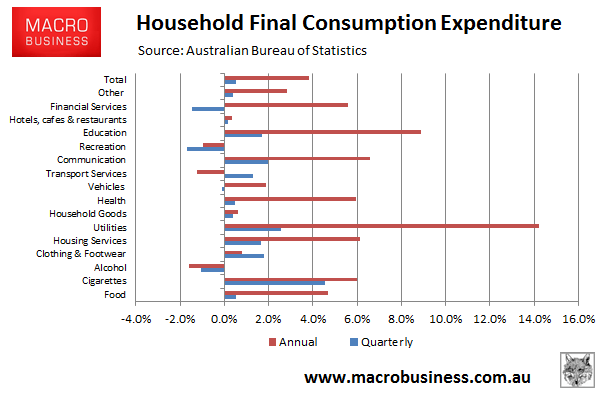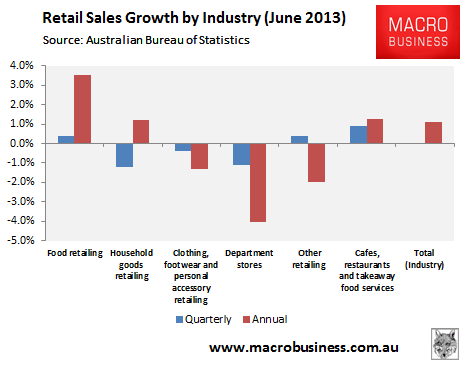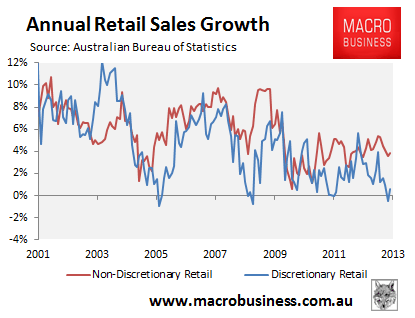
Last week’s national accounts for the June quarter, released by the Australian Bureau of Statistics (ABS), revealed that household financial consumption expenditure (HFCE) was a key driver of Australian GDP growth, increasing by 0.4% over the June quarter and contributing 0.2% of the growth in GDP.
The result seemed to confound many analysts (including your truly), whom had expected HFCE to come in roughly flat and not contribute to GDP.
A key reason for this view was that real retail sales data for the June quarter, released a month prior by the ABS, had registered zero growth, which suggested consumers were well as truly in their shell.
The main reason for the wide divergence between HFCE and the retail sales data appears to be that a larger share of consumer spending is being taken-up by essentials, such as utilities, education, and food. As shown in the chart below, which displays HFCE growth in actual dollar terms, expenditure by households increased by a solid 0.5% and by 3.8% over the year, with spending on essentials like utilities, education, health, housing, and food all growing particularly strongly (see next chart).

By comparison, retail sales data, which comprises around one-third of HFCE, registered no growth over the June quarter in actual dollar terms and only 1.1% growth over the year (see next chart).

Even the more limited retail sales data shows that the lion’s share of growth in retail sales has been in non-discretionary items (i.e. food retailing), whereas discretionary retail spending has experienced virtually no growth over the past year (see next chart).

Overall, the data shows that households are not as cautious as they appear to some, which is contributing to GDP. However, much of the spending growth appears to be by necessity on essentials, with growth in discretionary purchases remaining very weak.
If the trend persists, which seems likely as the dual credit and mining booms unwind, not to mention increasing on-line competition, traditional discretionary retailers will continue to struggle.

